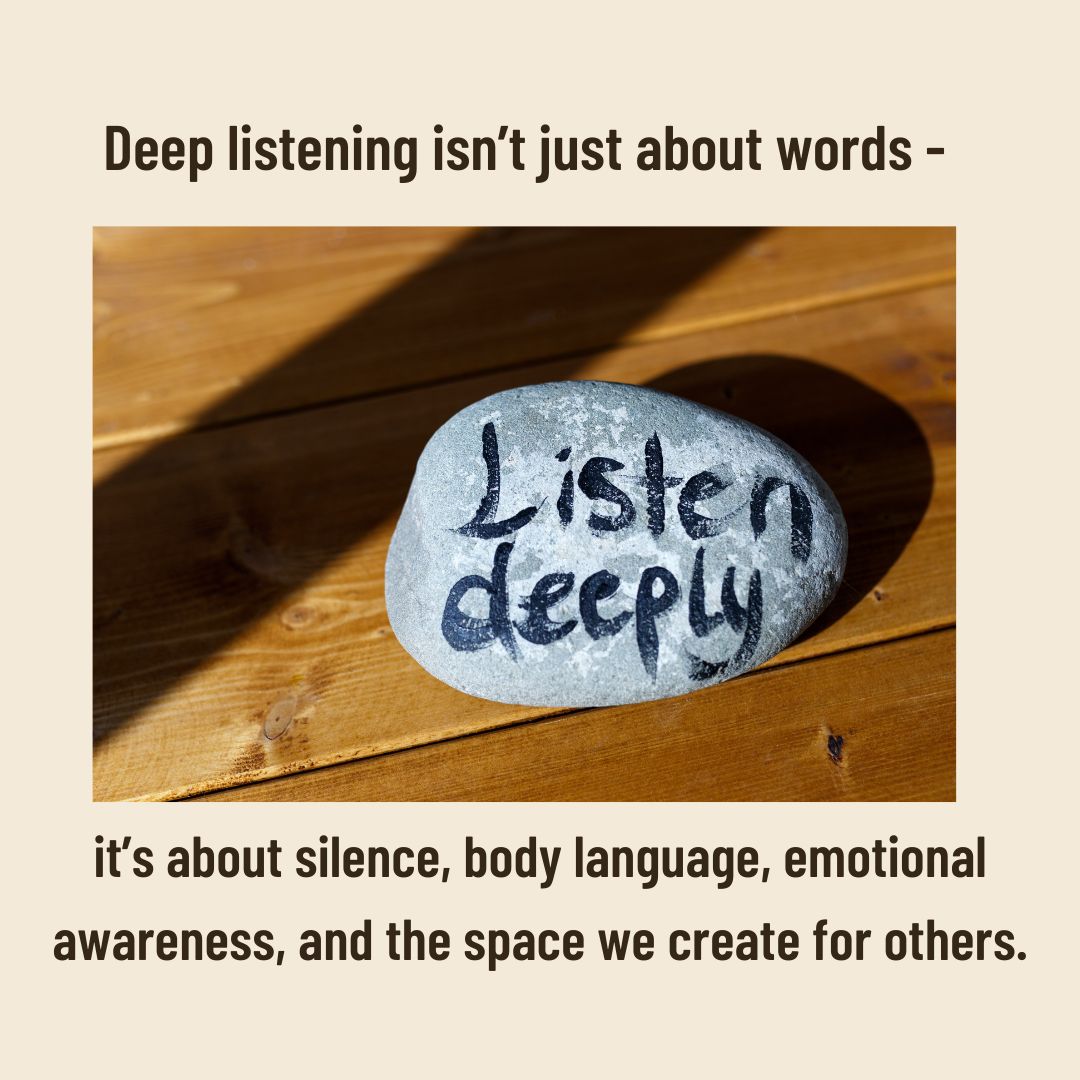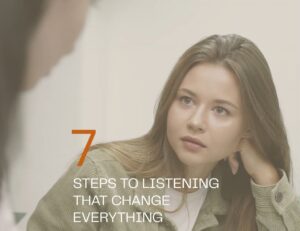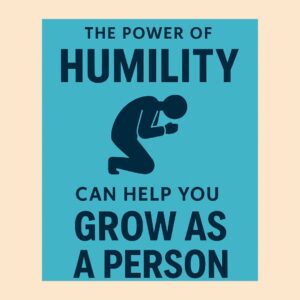When most of us think about “listening,” we picture words: the stories told, the advice offered, the questions asked. But real listening goes far deeper. Often, the most powerful parts of a conversation are carried in silence, in body language, or in the things left unsaid. What you don’t say matters—sometimes more than the words you choose.
Listening Beyond Words
Great listeners don’t just hear sentences; they notice signals. A hand gesture, a hesitant pause, or a slight shift in tone can reveal far more than words alone . A nod might agree with you, but the eyes may show sadness. A casual “I’m fine” might be betrayed by crossed arms or lowered shoulders.
This “hidden language” is the doorway to understanding. When you learn to listen with your eyes as well as your ears, you begin to see the emotions, struggles, and truths that often remain unspoken.
The Power of Silence
Silence is uncomfortable—for us. But for the person speaking, silence is often a gift. It gives them space to think, feel, and express what really matters .
Instead of jumping in with questions, solutions, or stories, try holding back. Summarise what you’ve heard, not to prove you’re clever, but to demonstrate you understand. Remember: only summarising demonstrates understanding . In that stillness, you’ll discover the real issue that words alone rarely reveal.
Listening and Integrity
Saying “I want to listen” and actually listening are two different things. Integrity is when our actions match our intentions . If you say you care but keep checking your phone, your actions speak louder than your words. If you promise to listen but interrupt with advice, the message is clear—you value your opinion more than their feelings.
Deep listening is a test of integrity. It requires aligning your behaviour with your commitment to understand. That alignment builds trust, and trust is the foundation of every meaningful relationship.
Recognising the Real Issue
Here’s the secret: people rarely share the real issue first. They test the waters with something smaller, a safe topic, or even a distraction . If you react too quickly—problem-solving, questioning, or dismissing—you’ll fail the audition. But if you stay quiet, present, and supportive, you’ll earn the trust that allows the deeper truth to emerge.
This is the hidden language of listening: silence, patience, presence. It’s less about the words you say and more about the message you communicate without speaking.
Conclusion
Listening is more than a skill—it’s a language of connection, spoken in pauses, body language, and trust. What you don’t say matters most. When you can listen with your whole presence—not just your ears—you create the kind of understanding that strengthens bonds, heals wounds, and builds trust.
Call-to-Action
This week, try an experiment: in one conversation, resist the urge to fill every silence. Notice gestures, pauses, and subtle shifts. Summarise what you hear instead of offering advice. Then reflect: What did you discover that you might have missed if you’d spoken too soon?
Related Resources
- 📖 Book: Listening – A Guide to Building Deeper Connections – available in paperback, eBook, and audiobook.
🎯 Coaching: Book a personal session for personalised support.
💼 Leadership Tips: Subscribe to the Team Focus newsletter here.
Frequently Asked Questions
1. What is the hidden language of listening?
The hidden language of listening is the unspoken communication we convey through silence, presence, and body language. It’s about creating safety and trust so someone feels understood.
2. Why does non-verbal communication matter in listening?
Non-verbal cues—like eye contact, posture, and facial expression—signal genuine attention. They often speak louder than words, especially when someone feels vulnerable.
3. How can silence improve listening skills?
Silence gives people space to think, process, and share. It stops you from rushing in with solutions and helps them uncover the deeper issue behind their words.
4. What role does empathy play in deep listening?
Empathy means listening without judgment or rushing to fix things. It helps the other person feel safe enough to open up about what’s really troubling them.
5. How can I recognise the hidden cues when someone wants to talk?
Look for hesitation, unusual behaviour, or changes in tone and energy. These subtle signs often signal they need more than surface-level listening.
6. Why do people rarely start with the real issue?
When people feel vulnerable, they “audition” you with a smaller or less important issue to test if it’s safe to share the real concern.
7. How does listening build trust in relationships?
Each time you listen and summarise someone’s feelings, you add a layer of trust. Over time, these small deposits create strong, resilient relationships.
8. What is the R.E.O.S.T.A.R. process in listening?
R.E.O.S.T.A.R. is a 7-step method (Recognise, Engage, Open up, Summarise, Transition, Actions, Real-issue check) designed to help you listen deeply and uncover the real issue.
9. Can listening really impact mental health?
Yes. Feeling heard reduces stress, isolation, and anxiety. Deep listening can be a powerful act of support that contributes to positive mental health.
10. How can I practice better listening every day?
Start small: put your phone down, stay silent longer, summarise instead of advising, and remind yourself—“Only summarising demonstrates understanding”







